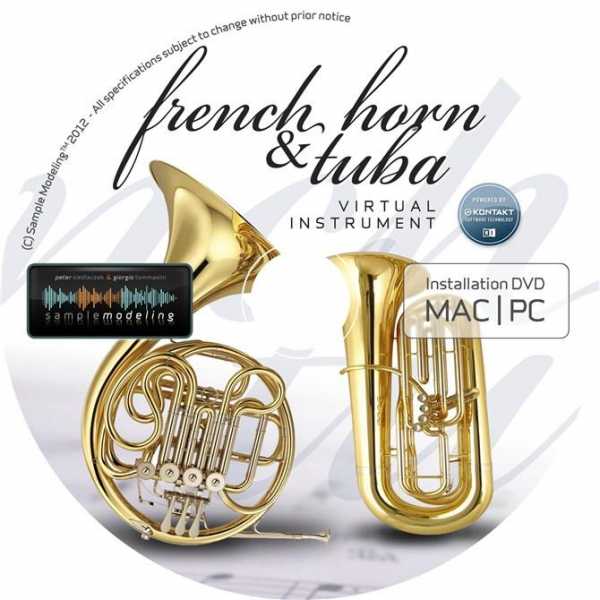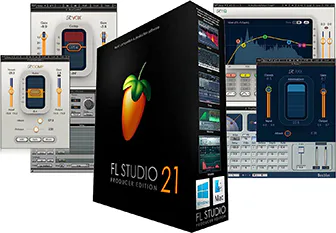French Horn & Tuba 3.0 KONTAKT
TEAM MAGNETRiXX | Feb 26 2017 | 269 MB
French Horn & Tuba 3 Multi-microphone anechoic recording allows to capture the original timbre of the instrument, along with its radiation pattern. Our proprietary “Harmonic Alignment” yields continuous transitions across virtually infinite dynamics. Specially devised “early reflections” impulse responses add a virtual space to the anechoic sound, greatly contributing to realism (see below). The programming moves further away from conventional libraries, by exploiting physically-oriented modulation of the recorded sound. This yields the characteristic crescendo pattern of French Horns, typical brass flutter on transitions, or even the “watery” sound, knocks, breath noise, and metallic resonances from the bell and the body of the instrument, greatly contributing to realism. The result is a series of playable, very expressive virtual instruments retaining the rich, full sound of the real ones.
Why anechoic?
The purpose of anechoic recording was threefold:
– 1.avoid “contamination” of the pure French Horn & Tuba sounds with the uncontrolled resonances of a particular ambience,
– 2.allow artifact-free “harmonic alignment” processing
– 3.provide clean articulations and phrases as a database to build the “adaptive model”.What’s new in The French Horn & Tuba 3?
In addition to improved fortissimo in the upper range, French Horn & Tuba 3 includes several exciting features:
New Early Reflections algorithm. The early reflections (ER) are those components of the emitted sound reaching the listener shortly after being reflected from the closest rear and lateral walls, floor and ceiling. They convey information about the spatial localizaton of the instrument, and greatly contribute to realism. In French Horn & Tuba 3, a sophisticated algorithm extracts the directional information of multi-microphone anechoic recordings to recover the overall timbre of the instrument along with its radiation pattern, assembling this information into a suitable ER impulse response, which adds a virtual space to the anechoic sound.Virtual Soundstage. This new feature allows precise positioning of the instruments in a virtual space located before the listener, using early reflections, pre-delay, convoluted panning and perceived distance algorithms. You can move your instrument back and forth, from side to side, or with a combination of the two, even in realtime, mimicking the natural movements of the player. You can modify the ratio direct/reflected sound, and even “displace” the back wall, for a variable depth effect.
This virtual soundstage will set you free of adding a further suitable acoustic environment, without incurring multiple-ambience issues. This can be carried out within the same Kontakt Player, which provides a high quality convolution reverb.Real time Timbral Shaping. This revolutionary new feature adds a virtually infinite timbral variety to sample-based instruments, by acting on the amplitude of individual harmonics, or groups of harmonics, even in real time. This is not a graphic equalizer; the controlling bars are not assigned to fixed frequencies, but to the first 10 harmonics of the played note. As a consequence, the affected frequencies vary with the pitch of the note. So, rising, for example, bar #1 will boost the fundamental frequency (first harmonic) of each note played, yielding a rounder sound. Rising bars #3, #4, #5 will increase the intensity of the corresponding harmonics for a more “nasal” sound, etc.
Expression Mapping. User-drawn rescaling of the expression CC may give better control of the dynamics, particularly when tailored to suit your own input devices like breath or wind controllers.
“For Unison Ensemble” IR. A specially devised Impulse Response, markedly reducing the phasing which may occur when several instruments are driven from the same MIDI track (i.e. in unison).
Unison Ensemble Multi. Special consideration has been given to creation of realistic ensembles from solo instruments, whether driven from separate MIDI tracks, or when playing unison. An advanced “Ensemble Maker” has been developed, affecting timing, static and dynamic pitch evolution, phase, response to dynamics, pitchbend, velocity, portamento time, in such a way that even if driven from a single MIDI source, each instrument will sound slightly different, as if played by a different musician.
A ready-to-use Multi, including four specially devised French Horns, the Ensemble Maker, and an appropriate convolution reverb, suitable for unison playing straight out of the box, is included in the package.The French Horn & Tuba 3 package includes:
•Four French Horns, characterized by slightly different timbre, attack, vibrato & portamento behaviour, suitable for solo and ensemble playing. The playing range corresponds to that of a top professional player, i.e. A0 – G4. (C3 = middle C).
•Four additional French Horns, specially devised for ensemble unison playing.
•A ready to use Multi for ensemble unison playing, including four French Horns and a suitable ambience / convolution reverb.
•A Tuba, covering the range of the whole tuba family from Contrabass Tuba to F Tuba, i.e. from C0 to F3.INFO/DEMO/BUY: http://mage.si/Fqo6
10370 Views
French Horn and Tuba 3.0 KONTAKT
https://beelink.pro/31408/French-Horn-and-Tuba-3.0-KONTAKT.htmlTags:
Categories:
Submit a Comment or Report Broken Links:





